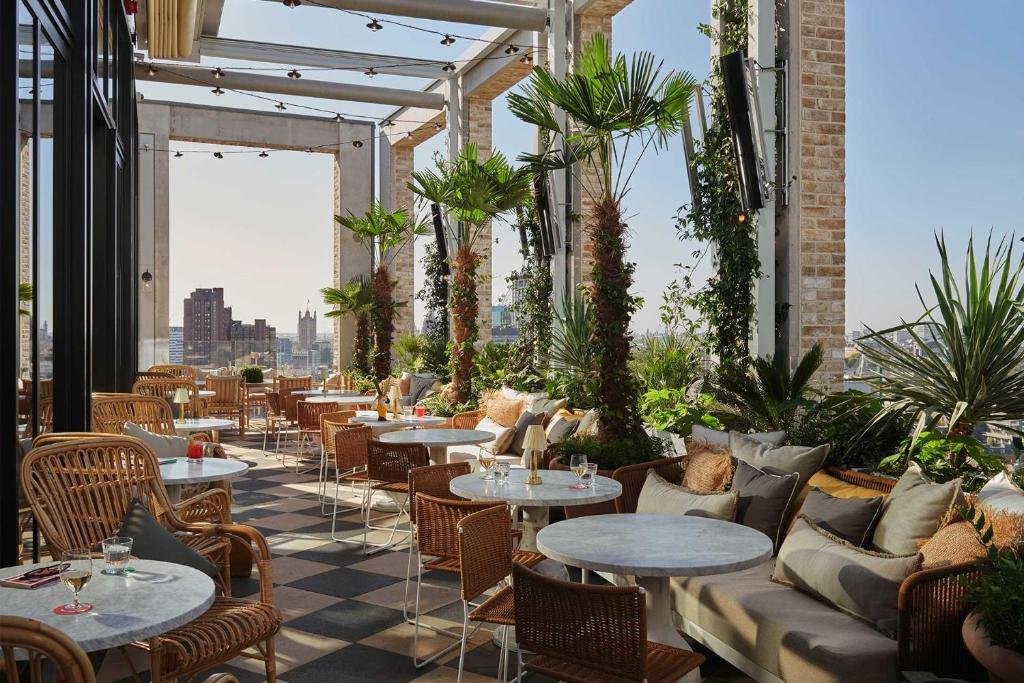lifestyle hotels in australia-
a time to shine.
First things first, what is a lifestyle hotel? And can we expect them to generate a price premium vs. their more traditional counterparts?
It’s a rare week in hotel investment circles (at least here in Oz) when the Ace Hotel Sydney and the 25hours Sydney Paddington hit the market for sale within days of each other! Two legendary brands, one city, and two vastly different neighborhoods. So our question is: what’s the deal and is now the right time for these two important lifestyle assets to test the market?
Today, Ace remains one of the few independent lifestyle brands and operators globally, with nine hotels (the Ace Downtown L.A. closed in late 2023). The brand started back in 1999 when the founders reported having “transformed a Seattle halfway house into an affordable hotel that would appeal to the creative class”.
When it opened in May 2022, Ace Hotel Sydney was the brand’s first hotel in the Southern Hemisphere. Originating from Europe in 2005, 25hours is a bespoke brand that made a name for itself in some of Germany’s coolest cities – particularly in Berlin where it remains the centerpiece of the iconic Bikini Berlin precinct. In 2016, 25hours sold a 30% stake to Accor and the brand now forms part of the group’s lifestyle joint venture with Ennismore.
So, what are the hallmarks of a true lifestyle hotel and do these two high-profile examples hit the mark? Let’s dive into some observations and see for ourselves.
Room size doesn’t (really) matter.
Did someone say 16m2 rooms? You’re probably thinking we’re kidding, but it’s true!
Why is it that room size seems to matter less for a lifestyle hotel? Some of it surely has to do with the fact that the rooms are for ‘sleeping in’ (or perhaps taking quick a shower) and the focus is solely on providing compelling public spaces, such that the guests are in the venues socialising, meeting, connecting, eating, drinking and perhaps most importantly of all – being seen!
Since its launch in Sydney in 2022, Ace has challenged the status quo and Australians are reminded that room size is only one of the factors that will determine the room’s price point in the market. With lead-in rooms starting from 16m2-19m2 (which will deliver a cozy queen-sized bed only), the phenomenon is a clever design response to an enormous challenge in hotel development.
How does one maximize the project’s yield (i.e. the number of rooms) for the least amount of built form? Now let’s remember, the rooms are the most profitable component of any hotel delivering a whopping 70%+ gross profit.
By comparison, a busy F&B venue might deliver a 15%-20% margin.
But if you are paying AU$400 plus for the “experience” (Ace Sydney is quoting $429 (avg) per night for their ‘Medium’ room which is 19m2-25m2), then the spaces outside of the room, including the F&B better be amazing, right? Well yes, that’s exactly the point.
By comparison, Marriott’s Sheraton Grand Sydney, located on the dress circle opposite Hyde Park (admittedly a much larger hotel) is quoting a standard ‘City Side King Room’, which is 40m2. (Note: the prices are the flexible rates advertised on the hotel’s website for the same dates).
Pound for pound it’s a remarkable difference – the Ace Hotel is delivering a 200%+ better performance per net m2 vs its more traditional counterpart. The capacity for lifestyle hotels to perform better on average room rates, but with a similar labour cost, is one of the reasons that lifestyle hotels have taken off around the globe. Likewise, brands such as Ian Schrager’s Public Hotel NYC, Standard, and Hoxton are equally known for their punchy, but modest room sizes. Rooms at the Public Hotel also start from 19m2.
I have to say, that I don’t know how big the rooms are at the 25hours Sydney, but the renders would appear to suggest they are closer to 25m2. The question is why the developers feel the need to go bigger and what premium they hope to achieve as a result.
F&B is not just a hotel outlet, it’s a full experience.
Are we witnessing the slow death of compelling hotel F&B across Australia?
Whereas conventional hotels continue to shy away from making bold decisions around their F&B venues, lifestyle brands and operators understand that the stronger the F&B offering, the higher the premium on room rates!
Put another way – nail the F&B and the rooms will take care of themselves! It’s a philosophy that when executed correctly, has delivered some incredible trading results globally. It is certainly the case that true lifestyle brands lean into F&B elements to become a cornerstone of the guest’s experience and interaction with the hotel.
Generally speaking, lifestyle operators are undeterred by the fickle nature of the culinary world, high operating costs, and challenges attracting the right talent to the hotel (these are just a few of the issues) and instead are committed to showing us a different way – where hotel venues not
only make money but become a destination synonymous with the hotel brand and experience itself.
Private members club, Soho House have become the epitome of success in this regard with their Cecconi’s and other outlets. Closer to home, Hellenika restaurant located within the Calile Hotel Brisbane delivers a vibrant, world-class dining experience within what is arguably Australia’s most successful lifestyle hotel.
For a lifestyle operator, success is measured not by in-house capture rates for guests taking up breakfast, lunch & dinner, but by the number of residents who occupy their venues. Experience tells any hotelier that it is challenging to deliver a ‘vibe’ or atmosphere and drive significant revenue if you can’t bring the locals on the journey with you.
And guess what happens when you truly focus your efforts on something? It expands!
It is a fact that the F&B venues within leading lifestyle hotels globally generate as much as 50% to 60% of the hotel’s total revenue, a number that is hard to imagine here in Australia. We know this to be the case with Ace Hotel’s New York property (where young entrepreneurs jockey for a position in the lobby lounge each to set up and work) and hotels such as The Ned London or the Standard Highline NYC. Some of the standout performers are understood to be delivering USD $50m - $80m per annum in Food & Beverage turnover from the hotel’s outlets.
There is no denying that as a category, lifestyle hotels have become synonymous with some of the most exciting and talked about designers from across the industry.
Lifestyle hotels have an uncanny ability to land some of the true rockstars and living legends from across the design world – there are too many to mention them all, but Edition Hotels was able to lure Ian Schrager across, Proper has Kelly Wearstler, Morgans Hotel Group, Phillipe Starck, W Hotels, Yabu Pushelberg and Six Senses has recently engaged with one of the world’s leading contemporary designers, Patricia Urquiola.
Taking the idea one step further, boutique and lifestyle brands globally have provided owners and operators with the ‘excuse’ they have desperately needed to push back on brands and operating standards to deliver a new way for the guest to experience a hotel.
Using design to push the boundaries is not optional for a lifestyle hotel – it is the reason for being.
LOVE AT FIRST DESIGN
In a nutshell, it’s less about following design conventions and more about creating rich, layered experiences. By tapping into the things that ‘really matter’ to the guest (i.e. the personal things that make them feel good and connected), design is often used in close connection with those other lifestyle elements – from fashion, art, culture, music, entertainment and wellness – to create a special place that goes well beyond the traditional hotel experience.
Since its opening, Ace Hotel Sydney has been lauded with recognition for the rich, high-caliber interior design work produced by Flack Studio and Fiona Lynch Office (FLO-designed ‘Kiln’ rooftop restaurant).
No, the hotel’s design is not to everyone’s liking (the bold mustard-coloured carpet in the guest rooms seems to come straight out of the hipster handbook and is not necessarily the color of choice for many)… but all of this is overlooked, as the experience, from the staff uniforms, the menus, lighting, and music all give an impression that the place has been given an extra shot of cool.
It is certainly something the ‘big box’ hotels of Sydney desperately would love to have, but under their DNA, could never deliver.
Community always comes first.
An international lifestyle brand hitting the local Sydney suburbs of Paddington and Surry Hills…sounds cool right? One of the hallmarks of true lifestyle hotels is how they are connected with their locals.
Standard Highline has the Meatpacking District, The Calile Hotel marked the coming of age for Fortitude Valley’s James Street, and The Old Clare Sydney marked the transformation of the inner-Sydney suburb of Chippendale after years of neglect and deterioration. These lifestyle hotels (along with many others) have become stitched into the fabric and remain the champions of their community and neighborhoods.
All lifestyle operators know the importance of the place in which the hotel is located and the need to craft a hotel experience that is bespoke and crafted to the location – the special culture, people, and places that the place is known for.
‘Community’, whilst a buzzword for many developers and hoteliers, is a matter of life and death for a lifestyle hotel brand. How the hotel takes active steps to understand and engage with the local community will always be a key measure of its success.
They do this often by being a good citizen, not out for themselves, but by providing both the guests and locals with an experience, program (event, entertainment), or physical thing (a place to work & network) which is considered important.
THE WRAP
Is Ace Sydney, really a luxury concept and brand? Or is this just the agent speaking for “interested parties need only proceed if their offer is over $1 million per key”? It’s an interesting time to sell an asset with c. 18 months of trading history.
By comparison, the 25hours is going to market as a project which is under construction. Once again, it’s a surprising time to initiate a sales campaign, but with an unsatiable appetite for hotel assets in the Sydney market, perhaps anything is possible?
What is clear is that never before have two assets, under extremely different circumstances been such important markers for the supposed superpower that the lifestyle category can generate in the Australian hotel market.
Backed by some of the lifestyle sector’s most important brands, the question is will Ace Hotel Sydney and 25hours Sydney sell at a premium to their more traditional, ‘non-lifestyle’ counterparts?
I guess we’ll have to wait and see.












